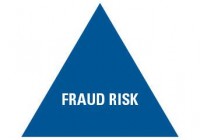Thinking In Temporal Extremes Can Be Bad For Your Wealth
Bonds, dividend investing, ETF investing, currencies “}); $$(‘#article_top_info .info_content div’)[0].insert({bottom: $(‘mover’)}); } $(‘article_top_info’).addClassName(test_version); } SeekingAlpha.Initializer.onDOMLoad(function(){ setEvents();}); We dance round in a ring and suppose, but the secret sits in the middle and knows. –Robert Frost One of the biggest problems any asset allocator must overcome is the problem of time in a portfolio. I call this the intertemporal conundrum . This describes how our financial lives are extremely dynamic and multi-temporal. That is, they are not one linear time line. Instead, they tend to be a series of short-terms inside of a long-term. This often makes the textbook application of the “long-term” inapplicable with regards to asset allocation. So, as much as we all know it’s silly to think too short-term it’s not totally irrational. After all, being involved in such dynamic financial markets gives us the urge to act and to try to take control of our outcomes in order to reduce uncertainty. We often act because we know there is an inherent short-termism in our financial lives. As I’ve stressed on many occasions , there’s no such thing as a truly “passive” portfolio. But we should be careful not to confuse this with the idea that being too short-term is intelligent. After all, we know that the financial markets tend to be highly unpredictable in the short-term. We also know that the financial markets tend to become more predictable the longer we hold onto assets. This is because the price changes involve too many random variables to be predictable in the short-term. In addition, we know that taxes and fees create potentially insurmountable hurdles so we should implement portfolios that seek to reduce these frictions as best as possible. Generally, our attempts to “take control” of our outcomes in the short-term end up costing us in the long-run. So, we want to think short-term because this gives us comfort and helps mesh with our inherently short-term financial lives. But we also know that thinking too short-term is bad for our wealth because this just churns up taxes and fees inside of highly unpredictable time frames. Then again, we know that we don’t necessarily have a textbook long-term in our financial lives. And we also know that some degree of activity will be necessary at times during the course of our lives so a static “long-term” view doesn’t mesh with inherently dynamic financial markets and financial lives. So, we have quite a temporal conundrum here. Managing this multi-temporal problem is not always easy. The textbook idea of the “long-term” doesn’t fit our financial lives. But we also know that it’s self defeating to be too short-term. So, the key involves finding that happy medium. This is why I like to think of the markets in a cyclical sense. This gives us the ability to construct portfolios that reduce tax and fee inefficiencies, but also take advantage of the fact that our financial lives are dynamic and so are the financial markets. Thinking in extremes is generally bad for your portfolio. And this is particularly important when applying the problem of time to a portfolio. And so, as is generally the case in life, we find comfort living in the extremes without realizing that the middle is often where the secret sits. Share this article with a colleague

